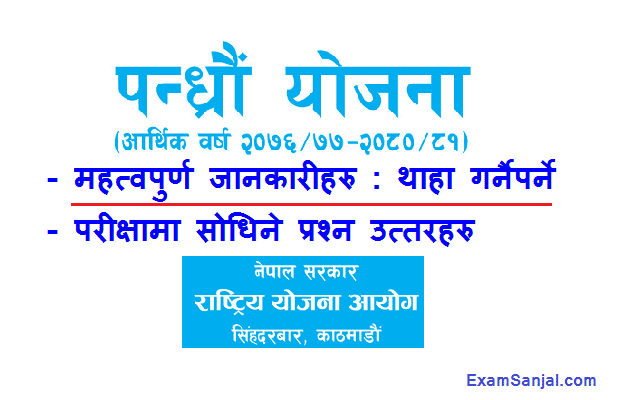15th Plan of Nepal 2076/77 to 2080/81 published by National Planning Commission ( Rastriya Yojana Aayog). All the important facts and questions answered about the 15th plan of Nepal are given below. In Lok Sewa, Government Service exam & various other public services exam, 15th plan of Nepal is most important topics or chapter.
Importants Notes/ Questions Answer/ Topics of 15th Plan of Nepal Government
National Goal of 15th Plan of Nepal- Rastriya Yojana Aayog
The Fifteenth plan will provide a basis for achieving the Long-Term Vision of “Prosperous Nepal, Happy Nepali”. Accordingly, the national goal of this plan is to create a basis for upgrading Nepal to the status of a high-income country by transforming it into a socialism-oriented welfare state with a prosperous economy, social justice, and improved living standards.
Major Quantitative Targets of 15th Plan of Nepal
Quantitative national goals and targets for prosperity are presented in the table
National goals, targets, and indicators Unit
High and equitable national income
1.1 High income at the level of an industrial nation
1.1.1 Economic growth rate (at the basic price) Percentage
1.1.2 Per capita Gross National Income US dollar
1.2 End of poverty
1.2.1 Population under the poverty line (absolute poverty)1 Percentage
1.3 Share of the lower 40 per cent of the population in national income
1.3.1 Ratio of the upper 10 per cent and lower 40 per cent population in income Ratio
1.3.2 Gini coefficient based on property

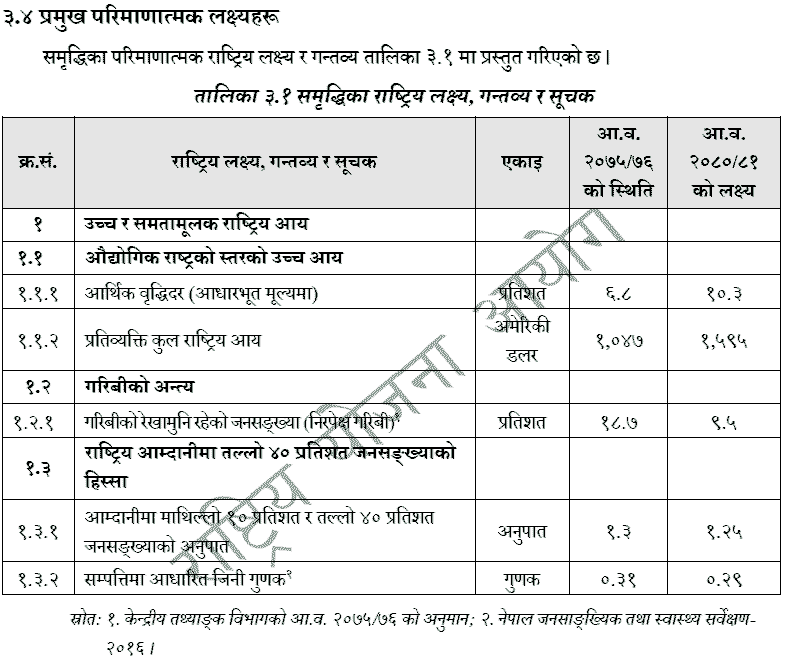
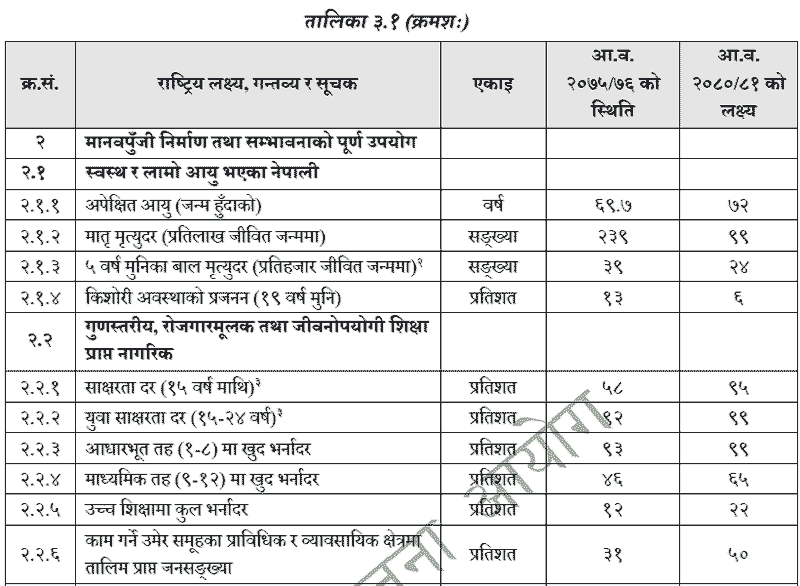
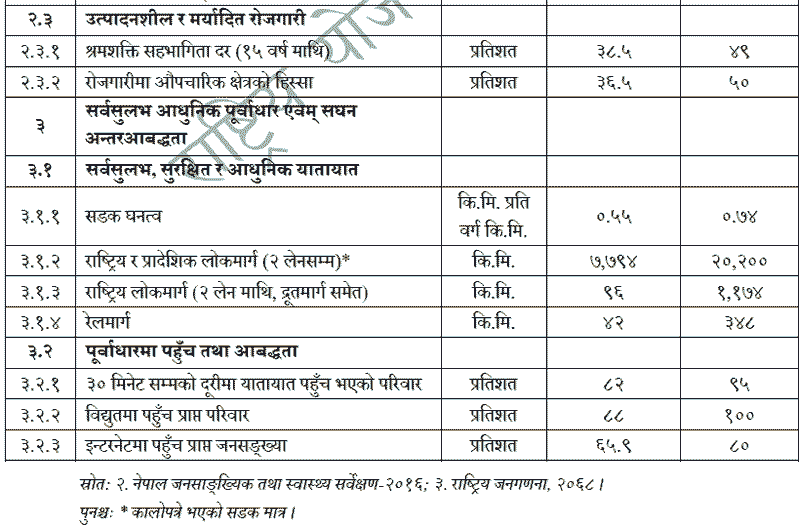
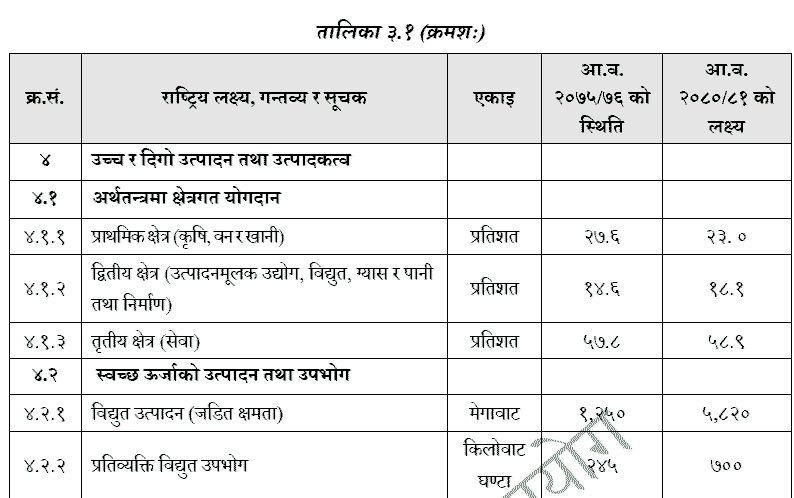
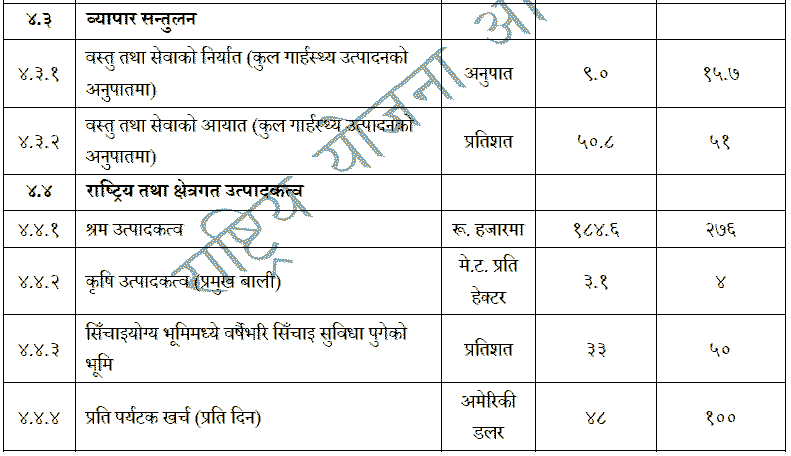
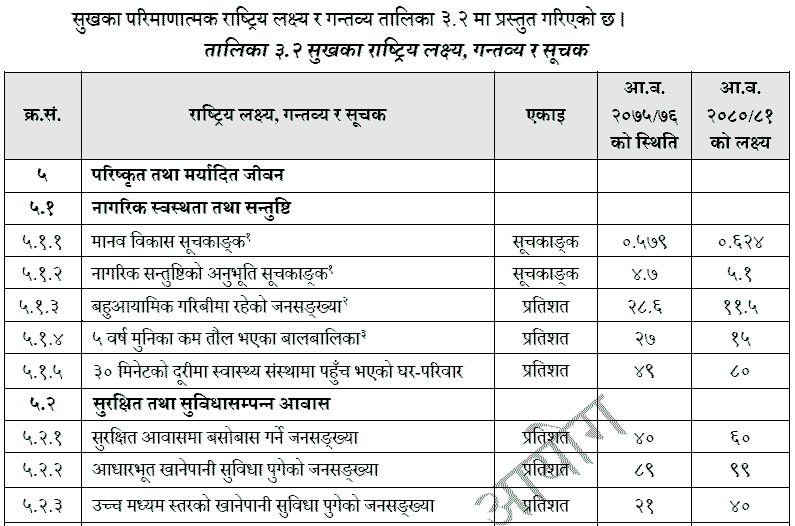
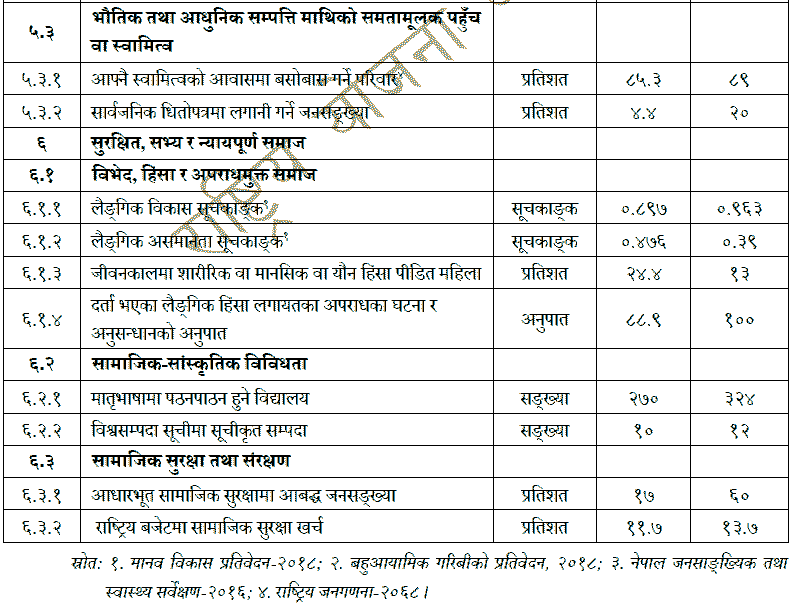
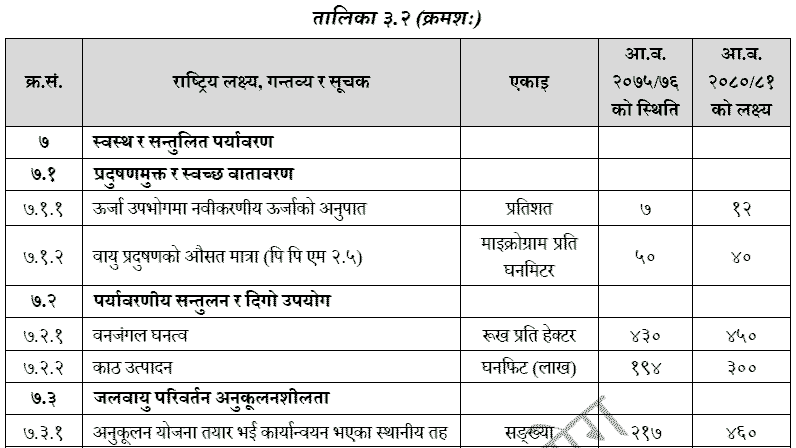
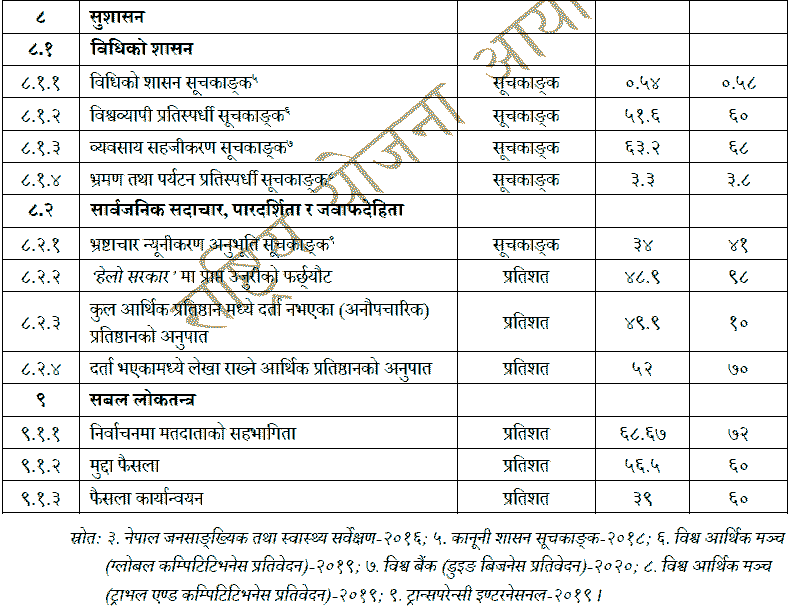
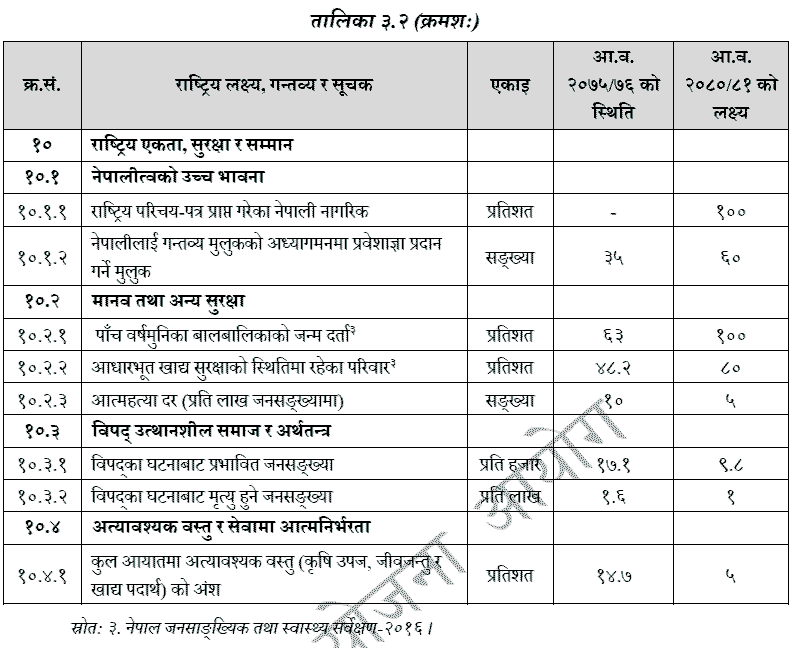
Introduction of 15th Plan of Nepal Government- National Planning Commission
Nepal has long established its image and identity as a nation that is known for economic dynamism. Kautilya’s Arthashastra has mentioned that Nepal’s radi pakhi were exported to the then state of Magadh, and mines also used to be explored and excavated. During the Lichchhavi period, Nepali goods used to be exported, and Nepali currency was recognized and was in circulation, in Tibet as well. The excellence attained by Nepali arts and engineering during the Malla period hints that the education system of that time was practical and focused on producing skilled manpower.
=> Click Here to View 15th Plan of Nepal PDF in Nepali
=> Click Here to View 15th Plan of Nepal PDF in English
Despite the foundation for economic development was laid with the unification of several small princely states into Nepal, the country fell behind in economic and social development due to political instability that followed the Kot massacre of 1846. The 104 years of Rana regime was characterized by a medieval, feudal and centralized governance system, personal abuse of the state treasury, and minimal access of the people to basic needs including education and health, and lack of attention to the infrastructure development. As a result, Nepal gradually started falling behind in the economic activities that were being expanded since ancient times. Although the procedures and the systems required for the governance structure were initiated in the decade-long political transition period following the advent of democracy in 1951, Nepal could not be developed as expected due to the lack of governance system accountable to the citizens in almost three-decades-long party-less Panchayat system.
The Constitution of Nepal has envisioned to develop Nepal as an independent, advanced and socialism-oriented economy by ensuring good governance, development, and prosperity through embracing the federal democratic republican system of governance. In the course of implementing the constitution, the federation, provinces, and local levels – all three tiers of government– have now become fully operational and been actively progressing towards achieving socio-economic development in the country.
The past efforts on planned development have helped realize significant progress in the social sector while mixed results are evident in the economic, infrastructure, and other sectors. The percentage of people living under absolute poverty and maternal and child mortality rates have declined. Life expectancy and enrolment rates at schools have increased, the drinking water and sanitation sector has improved, and roads, communication, and air transport infrastructure have significantly expanded. The country has reached closer to the goals set forth by the Fourteenth Plan by embarking on the path of high economic growth. Improvement signals are also apparent in production and productivity. The government has adopted the policy of equitable distribution of development returns by involving socioeconomically backward communities and areas into the process of overall development through social protection. It is, therefore, essential to make additional improvements in the citizens’ living standards by maintaining good governance, achieving rapid economic growth, enhancing productive employment, and reducing income inequality.

